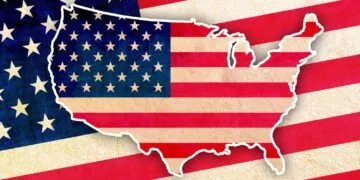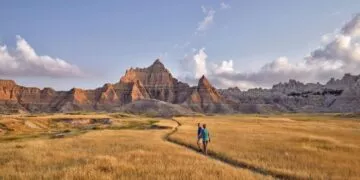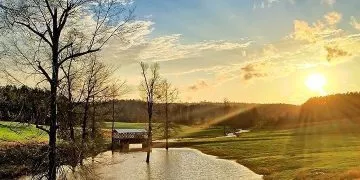Most commonly referred to as the “Sooner State” but also as the “Land of the Red Man” and “Native America,” Oklahoma was the 46th state to join the United States of America on November 16, 1907.
It has a population of 3,956,971 people (as of 2019), making it the 28th most populous state. Oklahoma is bordered by the states of Kansas, Colorado, Arkansas, Texas, New Mexico, and Missouri.
With a total of 69.899 square miles (181,037 square kilometers) of land and water, it is the 20th largest state.
The capital of Oklahoma is Oklahoma City, which is pretty much square in the middle of the state.
That’s enough fast facts about the Sooner State for now; we’re here to learn some of the more unique facts!
People have been living in Oklahoma for at least 11,000 years!
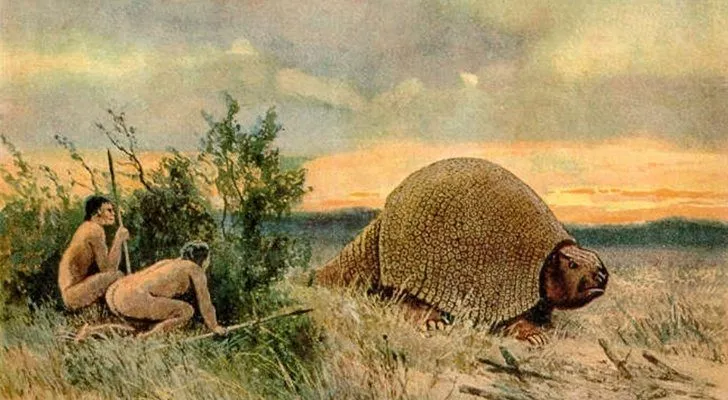
It’s commonly believed that North America was first settled long ago by a group of people we now refer to as the Paleo-Indians.
They came to North America sometime between 13-11,000 BC from the far east of modern-day Russia, from which point they crossed the Bering Strait into the westernmost tip of what is now Alaska.
The Paleo-Indians were hunter-gatherers who spread out all over North America and settled wherever they found ample hunting grounds.
The earliest records of Paleo-Indian presence within Oklahoma go back to sometime around 11,000 years ago, with evidence of their presence coming from unearthed spear tips and campgrounds.
Many tribes living in Oklahoma before European contact were the descendants of the region’s original inhabitants.
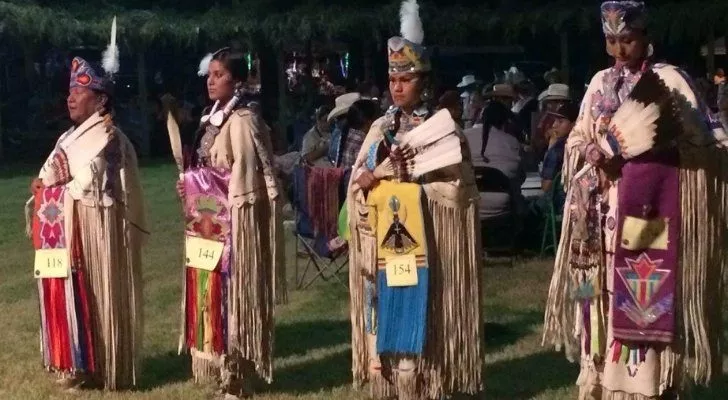
The region we now recognize as Oklahoma has been continuously inhabited since Paleo-Indians arrived 11,000 years ago.
Over time, these people came to settle for longer periods of time, eventually developing agriculture sometime around 800 AD.
Over the following centuries, several different cultures and languages developed.
One of them was the Teyas which disappeared without a trace since European explorers first encountered them.
Others, such as the Wichita and the Caddo, endured the European invasion of the ancestral homelands and still live in what we now call Oklahoma.
The first Europeans to reach Oklahoma were from Spain.
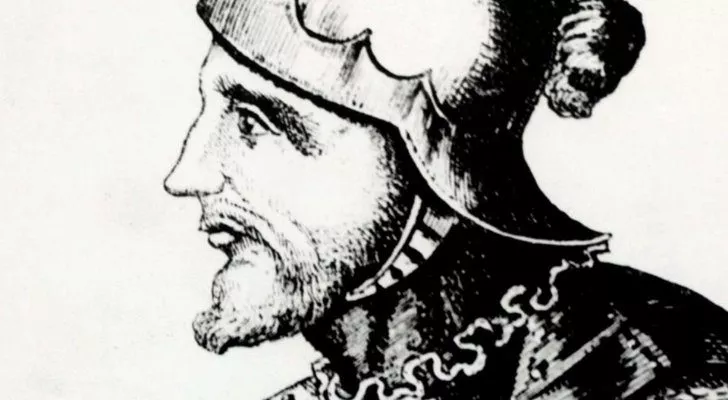
The Spanish conquistador Francisco Vázquez de Coronado and his entourage were the first Europeans to make it as far inland as modern-day Oklahoma.
Coronado began his expedition in 1540 from the west coast of Mexico, where Spain had established a base.
Coronado’s venture was to investigate rumors of vast golden cities that were said to be far inland within the modern-day USA.
Coronado made contact with several tribes, including the Teyas, while passing through the region we now call Oklahoma.
Unfortunately for Coronado, there were no cities of gold, and the expedition was a complete and utter failure.
The first European power to lay claim to Oklahoma was France.

In 1682, the famed French explorer and fur trader René-Robert Cavalier traveled down the Mississippi River from modern-day Illinois to the Gulf of Mexico.
In the process of this venture, he claimed the land around the river and all of its tributaries for France, naming it La Louisiane.
Although his expedition never actually made it anywhere near present-day Oklahoma, the region was nevertheless claimed by France. France would then control the region from 1682 until 1763.
Only the extremities of La Louisiane were explored and used by the French during their control of the region, and as such, Oklahoma was completely untouched.
Oklahoma was also once controlled by Spain.
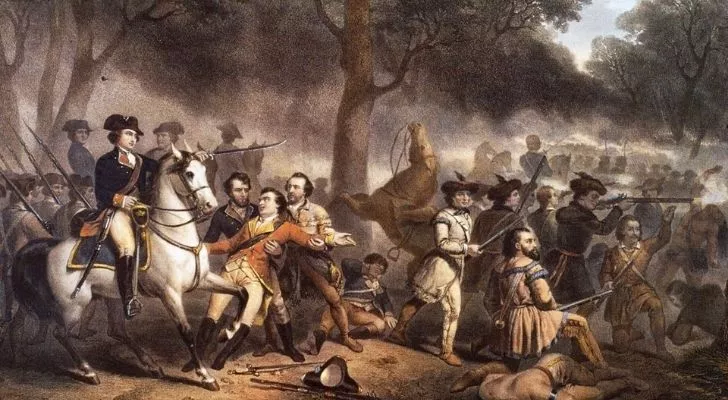
While Spanish explorers were the first Europeans to reach the Oklahoma region, France was the first to claim it.
France eventually lost their claim to the entirety of La Louisiane following its defeat in the French and Indian war in 1763.
Before the war, France had secretly made a treaty in 1762 with Spain, which handed them large portions of the territory, including the Oklahoma region.
As such, modern-day Oklahoma came under Spanish ownership instead of British.
Once again, Oklahoma was ignored by its new European stewards, who instead focused on the New Orleans region.
The United States of America bought Oklahoma from France in 1803.
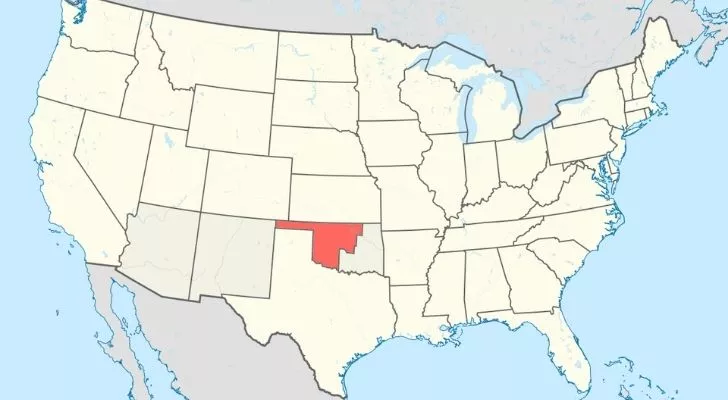
Under Napoleon Bonaparte, France regained control of the parts of La Louisiane they had previously handed over to Spain through another secret treaty in 1800.
However, France’s control was short-lived, as Bonaparte was forced to sell this territory to the newly formed United States of America in 1803.
Known today as the Louisiana Purchase, the US gained a mind-blowing 828,000 square miles (2,144,510 square kilometers), which more than doubled the fledgling country’s total land.
This massive swathe of land was partitioned into smaller and smaller territories.
Modern-day Oklahoma was first made a part of Louisiana Territory in 1812 (later renamed Missouri Territory), and then Arkansas Territory in 1819.
The United States government relocated many Native American tribes by force to Oklahoma.
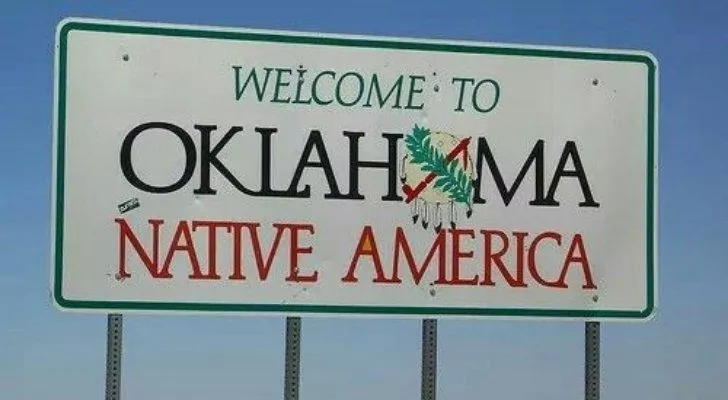
Much of the central region of the modern-day US was initially left alone by US settlers due to treaties between the ancestral owners of the land and the US government.
As the US settlement of North America spread west, the treaties were consistently broken as they pushed out most of these original inhabitants.
By 1854, this region, known as the Indian Territory, had been reduced to the state of Oklahoma.
Most Native Americans whose ancestral homes were within the southeast of the US were relocated by force to this region.
In 1890, this region was reduced even further to allow Oklahoma Territory to form.
Oklahoma City was settled in just one day.
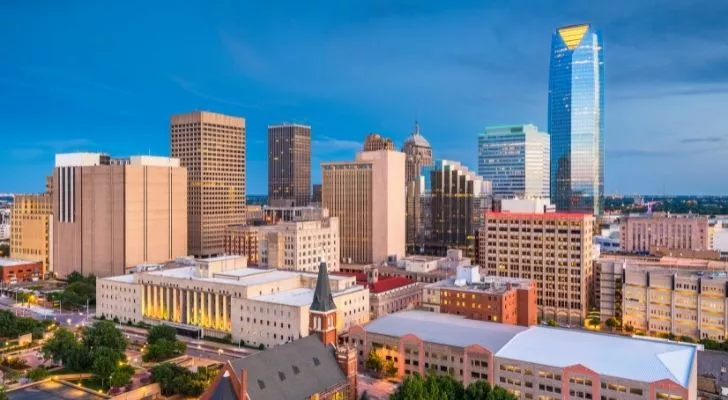
Parts of Indian territory began opening up to settlement due to some devious acts passed by Congress.
The first of these regions to be made available for settlement by US citizens was settled through race.
Known as the Oklahoma Land Rush of 1889, the two million acres (8,000 square kilometers) were up for grabs by anyone.
All one had to do was place a stake in the ground in an unclaimed area where one wished to live. To gain land ownership, one had to live there for five years.
Quite a few towns, including Oklahoma City, sprouted on the first day of this land rush.
Come nightfall on April 22, 1889, Oklahoma City already had 10,000 residents camping out on their respective plots of land.
Oklahoma’s nickname goes back to 1889.
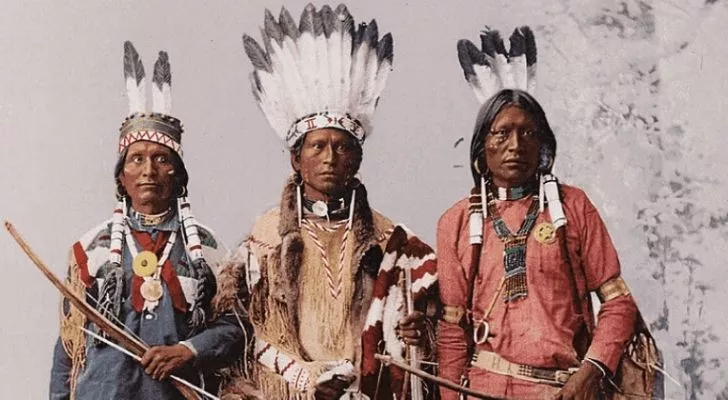
The rules of the various land rushes which allowed settlers to claim land within modern-day Oklahoma were pretty simple.
One could only enter the region to lay claim to a parcel of land after a specific time. There were, of course, many who broke these rules.
They would camp out in the soon-to-be-available regions and then claim land before anyone else could get there.
These people came to be known as “Sooners,” as they entered the region sooner than they were allowed.
Because of this illegal form of settlement in the region, the state gained the nickname the “Sooner State.”
Oklahoma is struck by an average of 62 tornadoes every year.
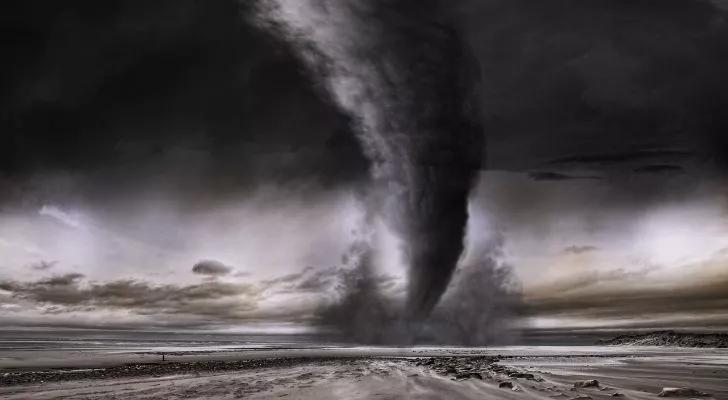
A large portion of Oklahoma lies in a region known colloquially as Tornado Alley.
This region which sees way more than its fair share of extreme weather, stretches through Texas, Oklahoma, Kansas, Nebraska, and South Dakota.
This meteorological phenomenon results from cold winds from Canada mixing with warm, humid air from the Gulf of Mexico and several other unique factors.
This regularly leads to extreme weather, such as massive thunderstorms, hail storms, and tornadoes.
For example, during the 1912 Oklahoma Tornado Outbreak, tornadoes were recorded at an average of one per hour.
An Oklahoman is believed to be the only human to have ever been hit by falling space junk.
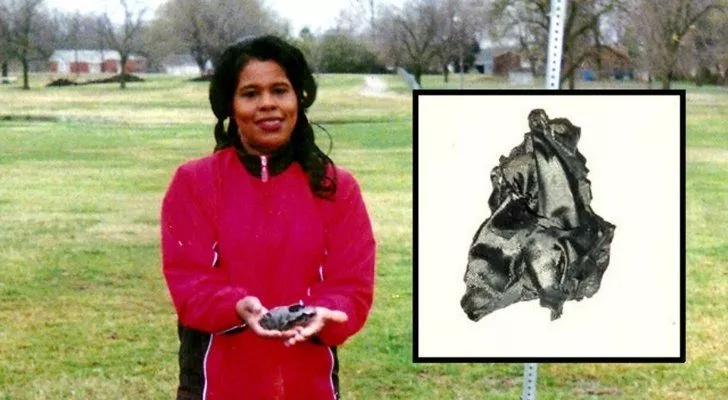
On January 22, 1997, Lottie Williams was out for a casual stroll when the sky fell on her head.
A six-inch fragment from a NASA rocket had somehow survived re-entry into the Earth’s atmosphere, and Lottie was unfortunate enough to be out walking in Tulsa when it did.
Fortunately for Lottie, the debris was traveling at such low speeds that it just glanced off her, and she walked away uninjured.
While NASA never confirmed that the piece of debris was theirs, they ensured that the story’s timeline fitted with one of their rockets that had just broken up while re-entering the atmosphere.
It’s the only known story of such an event occurring.
The Center of the Universe is located in Tulsa, Oklahoma.
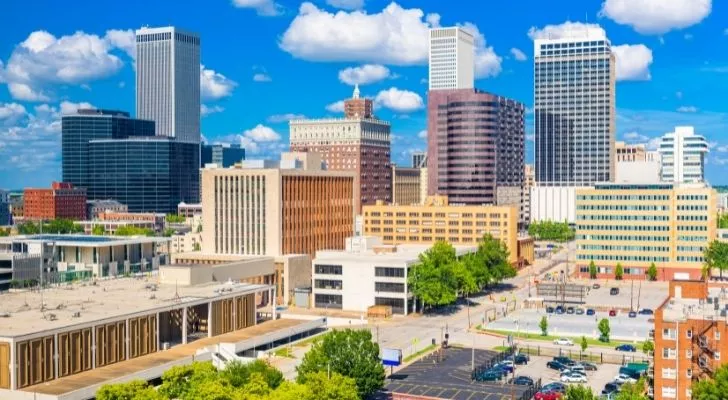
It’s not what you think it is, though…
The Center of the Universe is the name of a small concrete circle surrounded by a larger circle of bricks.
For the center of the universe, it certainly appears rather shabby and unkempt. It’s not special because of its looks, but because it is an acoustic marvel.
If one stands in the middle of the concrete circle and speaks, they will hear their voice amplified and slightly distorted.
While many have tried to explain the phenomenon, no one has agreed on why this happens. The best explanation is that the circle is surrounded by raised planters reflecting your voice at you.
The word Oklahoma doesn’t translate into “Red People.”

For a long time now, it’s been claimed that the word Oklahoma translates into “Red People.” This is because the name is a bastardization of the Choctaw words “okla” and “humma.”
Back then, the word was used to refer to the state of Oklahoma; the Choctaw used it to refer to themselves or their nation.
The confusion comes down to the multiple possible translations of the two words.
Among Choctaw speakers, “okla” generally refers to the Choctaw Nation itself, not people in general.
The word “humma” has a whopping 27 possible translations, but most of these don’t fit linguistically.
While the color red is indeed a possible translation, it’s generally not associated with people.
Instead, “humma,” referring to people, would better translate to honorable or brave. So Oklahoma doesn’t mean “Red People,” but more accurately means “honorable Nation.”
Oklahoma City’s Capitol building has an oil well underneath it!

Oklahomans claim it’s the only Capitol building in the country, if not the world, with an oil well underneath it.
They might be right, too, but in this day and age, it’s a contentious fact to celebrate.
A pool of oil was discovered deep underneath the state’s Capitol building.
To access this pool of liquid gold, a well was dug on a slant through a garden bed in front of the building, giving it the informal name “Petunia Number One.”
Over the 43 years that it operated, it produced some 1.5 million barrels of oil!
Oklahoma has an official state meal, and it’s terrifyingly large.
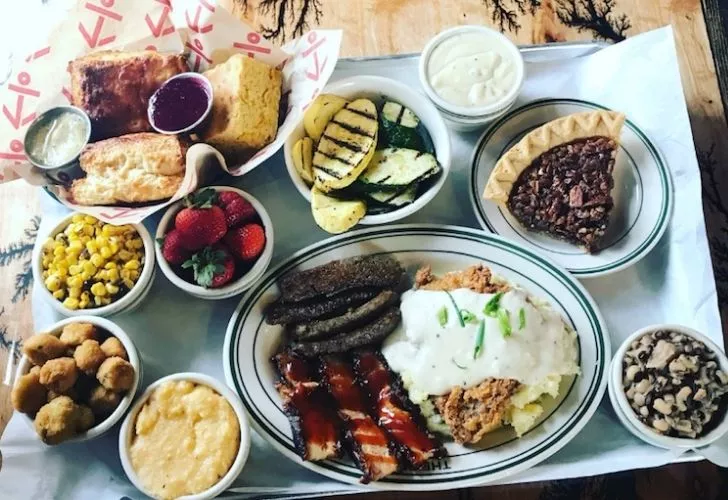
Many states in the US have official foods, but that’s not good enough for Oklahoma. Instead, they have a full-on official state meal.
The meal, including many southern comfort foods, was made official in 1988. The state wasn’t on a health kick then, as the meal is calorific!
A full Oklahoma state meal includes barbecue pork, chicken-fried steak, sausage with biscuits, and gravy.
That’s not all, though; it also includes sides of corn grits, squash, okra, corn, black-eyed peas, and a good chunk of cornbread.
To finish the meal, the dessert includes strawberries and pecan pie.
Depending on what sized portions you allow, the entire meal could contain at least 2700 calories (11,296 KJ)!
Oklahoma has a pretty troubled past, and that’s an understatement.
While it’s essential not to forget our darker days or brush them under the carpet, it’s also important to celebrate the good days too!
The state’s known as one of the cultural centers of the US thanks to its high percentage of Native Americans today, and that’s something to celebrate!


